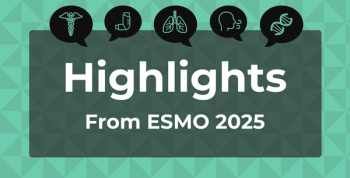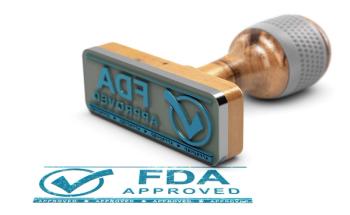
Certain Patients Who Have BCC May Benefit From Electrochemotherapy
Electrochemotherapy in basal cell carcinoma (BCC) was evaluated for its utilization practicality, efficacy, and safety, as well as factors that may predict disease response to the treatment.
Electrochemotherapy (ECT) to treat
The authors reiterated, however, the surgical excision as standard treatment is still a suitable and practical option for patients who have localized disease.
Their prospective registry-based analysis used data on patients in the International Network for Sharing Practices of Electrochemotherapy (InspECT) multicentre database for those treated with bleomycin-ECT between 2008 and 2019. There were 330 (34%, female; median age, 76 [range, 23-98] years) patients from 7 countries accounting for 587 tumors. Use of local or general anesthesia depended on tumor size, total lesions, and disease location. Bleomycin was infused for 2 to 5 minutes using an intravenous (56%) or intratumor (44%) method, and the max dose was 30,000 IU; electric pulses were applied after 8 minutes had passed following the infusion and the drug had diffused into the tumor tissue. Patient response to the ECT was determined following measurement of the largest tumor at 3 time points: baseline, 1-month follow-up, and 2-month follow-up. Partial response (PR) equated to at least 30% tumor shrinkage and progressive disease as at least a 20% tumor increase.
“According to recent studies, ECT is associated with 50% to 100% clearance rates in BCC. However, the generalizability of results is blurred by global variation in study designs, treated patients, and the reporting of results,” the study investigators wrote. “Our results may inform the current patient selection and help design future clinical trials in more selected populations.”
Of the examined tumors, their median size was 13 (range, 5-350) mm. However, most were smaller than 3 cm (90%). The most common location for a patient’s BCC was the head and neck area (80%), 85% were primary disease, the median total per patient was 1 (range, 1-7) tumors, and 61% were treatment naïve.
Local anesthesia was used in 68% of the cases during ECT, and local plus mild sedation in the remaining 32%. The per-tumor clearance rate was 83%, the overall complete response (CR) rate (tumor disappearance) was 81% after just 1 treatment, 15% had a PR, 3% had steady disease, and 16% of patients required retreatment. A median 6.7 months passed between the first and second treatments, and 13 months was the median interval among patients with local progression, which included relapse after a previous CR or PR. Five patients died.
Just 42 adverse events occurred, of which 22 were instances of hyperpigmentation and 20 were skin ulcerations. Ninety-six percent of patients did not experience pain or had only mild discomfort. Further, median and mean (SD) pain scores, respectively, were consistently low throughout the study period:
- Baseline: 0 and 0.41 (1.11)
- Post procedure: 0 and 0.49 (1.14) (P = .017)
- 2-month follow-up: 0 and 0.32 (1.27) (P = .347)
- Last follow-up: 0 and 0.23 (1.11) (P = .023)
When the investigators evaluated patient data for disease predictor via univariate analysis, tumor clearance was more likely if it was 3 cm or smaller (P = .002), the patient had no prior treatment (P < .001) or prior radiotherapy (P = .007), disease location was the head and neck area (P = .008), and deep (P = .001) and lateral margins (P = .045) were covered. Multivariate analysis showed 4.44 and 1.86 higher odds, respectively, of tumor clearance associated with coverage of deep tumor margin (odds ratio [OR], 5.44; P = .016) and lack of treatment history (OR, 2.86; P = .001).
“Importantly, our findings reinforce the notion that ECT is a safe, although suboptimal, therapeutic option for BCC patients. Most participants reported no adverse events, and local toxicity was mostly mild,” the authors concluded. “In this regard, it is worth noting that preliminary evidence suggests that de-escalated doses of bleomycin or the use of calcium instead of chemotherapy may further reduce risk or even avert toxicity while preserving ECT efficacy.”
Limitations of their findings are that because their patient population was heterogeneous, rigorous comparison with other treatments is difficult, there have not been formal comparison with other skin-directed nonsurgical therapies, and selection bias.
Future areas of investigation include combining ECT with immunotherapy or targeted therapy and assessing quality of life and aesthetic outcomes in patients.
Reference
Bertino G, Muir T, Odili J, et al. Treatment of basal cell carcinoma with electrochemotherapy: insights from the InspECT Registry (2008-2019). Curr Oncol. 2022;29(8):5324-5337. doi:10.3390/curroncol29080423
Newsletter
Stay ahead of policy, cost, and value—subscribe to AJMC for expert insights at the intersection of clinical care and health economics.







































